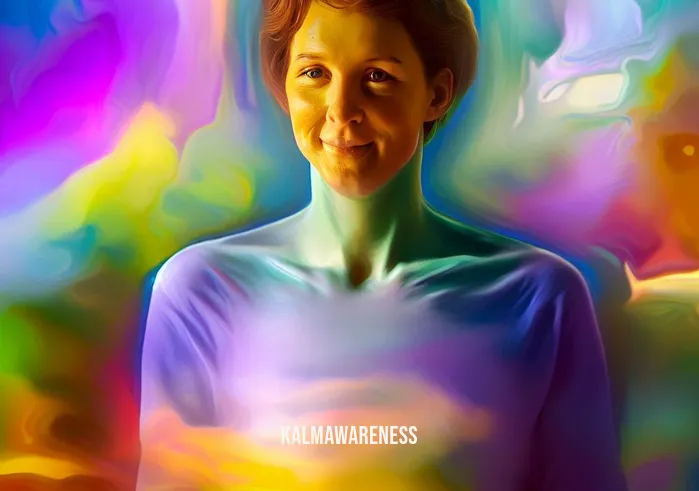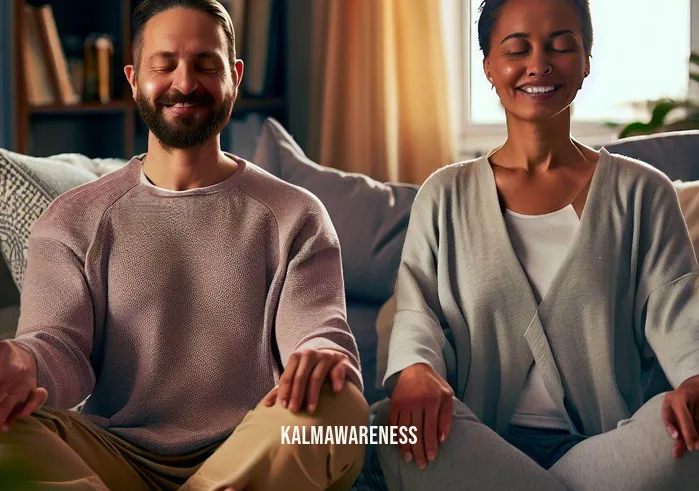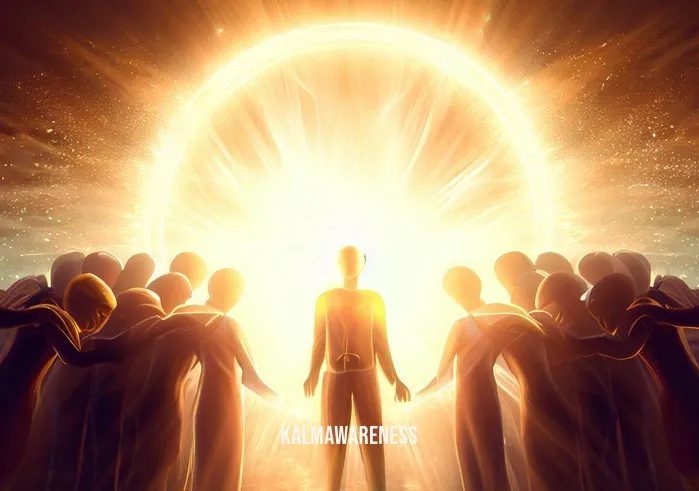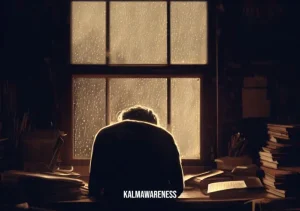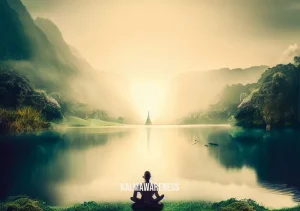The Intriguing World of Color Visualization Meditation: A Gateway to Mindfulness and Inner Peace
Meditation is more than just a trend; it’s a doorway to inner peace, increased focus, and a better understanding of one’s self. While there are numerous techniques to help individuals dive deep into meditative states, one lesser-known yet highly effective method is color visualization meditation. Not only does this form of meditation offer insight into your own thoughts and emotions, but it also adds a creative, visual element to the experience, making it a unique blend of mindfulness, visualization, focus, imagination, and inner peace.
Why Color Visualization Meditation Matters
Let’s begin by understanding what color visualization meditation is. This technique involves focusing on various colors in your mind’s eye while in a meditative state. Each color is typically associated with different feelings, emotions, or energies. The purpose is to enhance your focus and deepen your meditative state by channeling these specific energies.
Traditional meditation practices, such as Jack Kornfield Meditation for Beginners, are a good starting point, but adding the layer of color visualization can take your practice to a new level. It’s not just about silencing the mind but engaging it in a meaningful way.
“The greatest weapon against stress is our ability to choose one thought over another.” – William James
How Does It Differ from Other Meditation Practices?
Color visualization meditation is unique because it incorporates a strong element of imagination and creativity. Unlike meditation techniques that focus solely on breathing and meditation, this practice integrates your visual senses, thereby employing a broader range of mental faculties. It’s like adding a burst of color to a black and white photograph; the fundamental structure remains the same, but the experience becomes richer.
In traditional practices that involve a peaceful state of mind in which thoughts are not occupied by worry, the emphasis is often on emptying the mind. Color visualization, however, enriches the meditative experience by filling your thoughts with vivid hues, thereby bringing another dimension to the practice.
The Role of Focus and Mindfulness
The key to successful color visualization meditation lies in the quality of your focus and mindfulness. While it is a different approach, the fundamentals of sustainable self-care through mindfulness remain the same. As you delve deeper into this practice, you learn to cultivate a strong sense of self-awareness.
- Focus: At its core, this meditation practice is designed to improve your ability to concentrate. The more clearly you can visualize each color, the more effective the meditation will be.
- Mindfulness: Like the mindfulness techniques used in Rouse Yoga, you become keenly aware of the present moment, embracing it without judgment.
Preparing for Color Visualization Meditation
Before you begin, it’s crucial to set the stage. Choose a comfortable spot where you won’t be disturbed. Whether you prefer to meditate lying down or sitting up, ensure that you are in a position that allows for complete relaxation. For those who are new to meditation, there are simplified techniques available, aptly termed Meditation Made Simple, to help you ease into more advanced practices like color visualization.
Your environment also plays a significant role. While some prefer complete silence, others opt for calming background music or nature sounds. The goal is to create a setting that promotes a peaceful mind, which serves as a foundation for effective color visualization.
In summary, color visualization meditation offers a novel way to explore your inner world, tapping into your imagination to strengthen your focus and awareness. It’s an enriching add-on to traditional mindfulness practices, bringing a vivid spectrum of possibilities into your meditation journey.
Would you like to delve deeper into how to practice color visualization meditation effectively? Keep reading to explore the specific techniques and tips that will guide you through this mesmerizing practice.
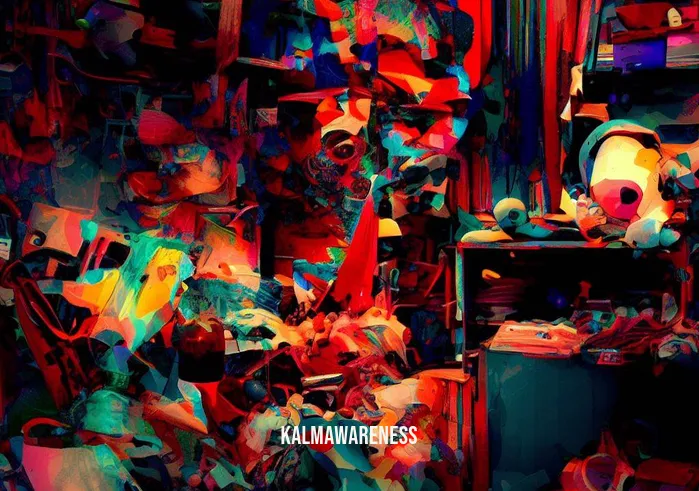
Unveiling the Layers: A Closer Look at Color Visualization Meditation
Having introduced the fascinating world of color visualization meditation, it’s time to delve deeper into its complexities and the benefits it offers. This chapter will guide you through the specific techniques involved, unraveling the relationship between colors, emotions, and mental states.
Techniques to Enrich Your Color Visualization Meditation Practice
Meditation is not a one-size-fits-all discipline; it offers various pathways to achieve a meditative state. One effective strategy to intensify your focus and mental strength is to incorporate elements from other established methods like Train Your Mind to be Stronger Than Your Feelings. Below is a list of some techniques that can enrich your color visualization meditation practice:
Layering: Incorporate additional layers of complexity, like associating specific emotions or experiences with each color.
Progression: Start with simpler colors and progress to more complex shades or patterns over time.
Pairing with Physical Movements: Combine your meditation with Mindful Movement Sleep or even integrate aspects of Rouse Yoga for a holistic experience.
Incorporation of Aroma: Some people find that coupling visual elements with scent enhances focus and relaxation.
Setting Intention: Like in mindful hypnobirthing, setting an intention before meditation can channel your focus.
The Colors and Their Significance: A Simple Guide
Understanding the meaning behind each color can be invaluable for maximizing the effectiveness of your meditation sessions. Below is a table to help you decode the significance of each hue.
| Color | Emotional Correlation | Common Uses in Meditation |
|---|---|---|
| Red | Passion, Energy | To boost enthusiasm |
| Blue | Calm, Trust | For relaxation |
| Yellow | Optimism, Cheer | To uplift mood |
| Green | Balance, Harmony | For equilibrium |
| Purple | Creativity, Spirituality | To enhance intuition |
Why is Color Visualization Meditation So Important?
Meditation as a whole has gained much importance in today’s fast-paced world, but the unique benefits of color visualization shouldn’t be underestimated. It offers a specific set of advantages that include but are not limited to:
Emotional Resonance: Colors often invoke strong emotional responses, allowing for targeted emotional healing.
Enhanced Imagination: Engaging your visual senses promotes creativity, fostering an enriched imaginative faculty.
Sensory Experience: Unlike purely contemplative practices, this form of meditation provides a multi-sensory experience that offers a holistic approach to mindfulness.
Quick Results: Many find that using colors helps them get deep so fast into a meditative state compared to other techniques.
Tips to Maintain Consistency in Your Practice
Consistency is the key to any successful meditation routine. Whether you are practicing daily or weekly, there are ways to keep your practice vibrant:
Schedule: Like one for each blessed day, set aside a specific time for your color visualization meditation.
Journal: Keep a record of your sessions, noting how different colors make you feel and the effectiveness of each session.
Reminders: It helps to have triggers or reminders, like a visual cue or touching a specific body part to remind you to meditate.
Community: Share your experiences and seek advice from a community, whether it’s through online forums or in-person groups that focus on sustainable self-care.
Now that we’ve explored the intricate aspects of color visualization meditation, you’re likely eager to start or refine your own practice. What awaits you is the step-by-step guide that will walk you through a color visualization meditation session. From setting the ambiance to final relaxation, the next chapter will cover it all. Keep reading to ensure you have all the tools you need for an enriching meditation experience.
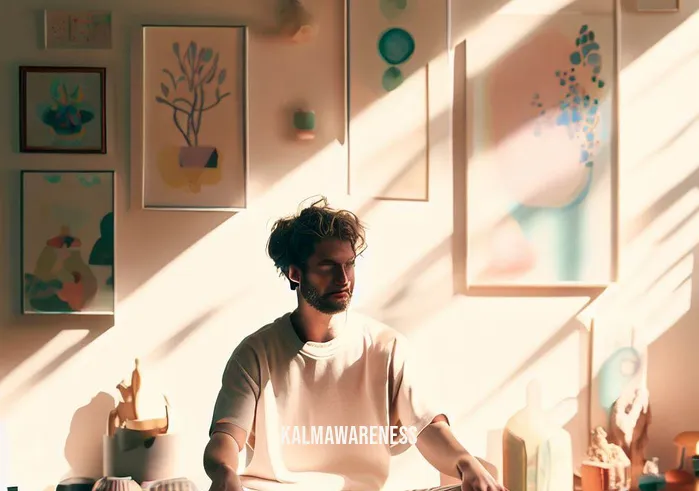
The Spectrum of Hope: Finding Inspiration Through Color Visualization Meditation
While the previous chapters have helped you understand the intricacies and benefits of color visualization meditation, this chapter aims to inspire you. When the world outside seems overwhelming, the kaleidoscope of your mind can offer sanctuary and inspiration. This chapter explores how color meditation can be your emotional palette, providing hues of hope and brushstrokes of inspiration.
When Color Speaks Louder than Words: Quotes to Inspire
Sometimes, the wisdom of others can cast light on our own path. Here are some quotes that resonate with the essence of color visualization meditation, fostering hope and peace:
“In the right light, at the right time, everything is extraordinary.” – Aaron Rose
“Color is the keyboard, the eyes are the harmonies, and the soul is the piano with many strings.” – Wassily Kandinsky
“Life is about using the whole box of crayons.” – RuPaul
“The purest and most thoughtful minds are those which love color the most.” – John Ruskin
“Color is a power which directly influences the soul.” – Wassily Kandinsky
These words remind us that color can offer solace, provoke thought, and instill calmness—a tenet also upheld by practices like Jack Kornfield Meditation for Beginners.
Painting the Canvas of Your Mind
In color visualization meditation, your mind becomes a canvas where each brushstroke adds a layer of depth to your internal experience. What does each hue mean for you? How can you cultivate a daily practice that serves as a creative outlet? Just as judgment of the wise promotes nuanced thinking, integrating elements from other forms of mindfulness, like how to spell stabilize your thoughts through focused attention, can be beneficial.
Getting Started: There is no time like the present, so why not start soon?
A Space for Practice: Whether you can meditate lying down or prefer to sit, creating a space conducive to meditation helps. Here’s how you can meditate in different positions.
Inspired Colors: Choose colors that inspire you; these could be tied to personal experiences, dreams, or even the natural world around you.
Walking the Path: Transformation Through Color
This practice can often be more potent when combined with other mindful activities. For example, envisioning a color while mindfully walking can provide a grounding experience, making the practice beneficial for both your mental and physical well-being. It’s a path to inner peace that involves attaining a peaceful state of mind in which thoughts are not occupied by worry.
The Fountain of Internal Inspiration
What do you hope to discover through your color visualization journey? Whether it’s tranquility, happiness, or enlightenment, the act of focusing on different hues can have various implications:
Inner Peace: Colors can act as mental oases, places within the mind where you can retreat for solace and be peaceful.
Intrinsic Motivation: By actively engaging in this form of meditation, you tap into a wellspring of inner strength and motivation, comparable to the self-reliance endorsed by Mirror Gazing spiritual benefits.
Hope and Aspiration: Colors can symbolize future goals and dreams, acting as visual cues for your aspirations.
Now that we have navigated through the inspiring facets of color visualization meditation, you might wonder about the scientific aspect behind this powerful practice. How do colors affect your brain chemistry? What does modern research say about the physiological effects of color visualization meditation?
In the next chapter, we’ll delve into the science behind this intriguing form of meditation, demystifying the mechanisms that make it so effective. It promises to be a chapter bursting with insights, so continue reading to deepen your understanding and fortify your practice.
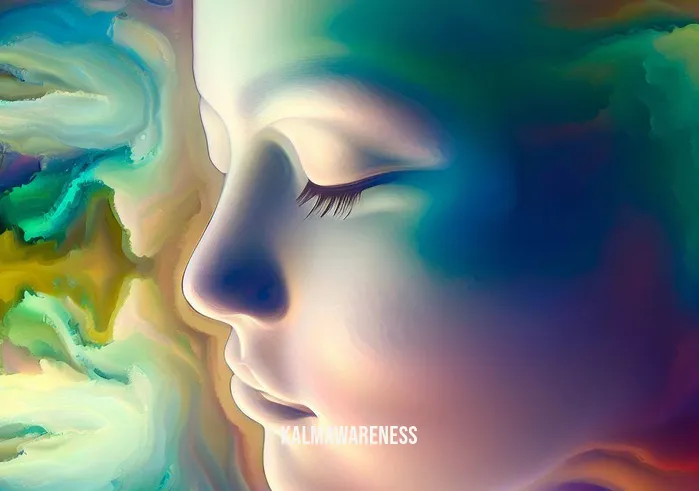
The Palette of Consciousness: Unpacking the Science and Mechanics of Color Visualization Meditation
Having traversed through the basics, significance, and inspirational dimensions of color visualization meditation, it’s time to dig deeper. While the colors you visualize serve as metaphors for emotional states and inspire your mindfulness journey, the science behind this practice remains fascinating and illuminating.
The Neurological Underpinning: How Colors Affect the Brain
Understanding the relationship between colors and brain activity can help deepen your practice. Here are some key insights:
Stress Reduction: The tranquility achieved during this meditation is comparable to sustainable self-care methods.
Emotional Response: Certain colors can elicit strong emotional responses, which can be channeled for therapeutic benefits, similar to techniques in mindful hypnobirthing.
Neurochemical Changes: Just as rouse yoga releases endorphins, focusing on specific colors may stimulate neurotransmitters, improving mood and focus.
The Vibrational Aspect of Color
It’s compelling to consider color from the standpoint of energy and vibrations. It’s this vibrational aspect that makes this practice an element of some meditation exercises.
- High-frequency colors: Like blue and violet, are believed to have calming effects.
- Low-frequency colors: Like red and orange, may energize the psyche.
A Toolkit for Advanced Practitioners
For those ready to elevate their practice, incorporating advanced techniques can offer a multitude of benefits.
Dynamic Visualization: Imagine colors flowing or changing as you meditate. This dynamic approach can help you train your mind to be stronger than your feelings.
Chakra Alignment: Each of the body’s energy centers, or Chakras, is associated with a specific color. Aligning these can be as meaningful as having one for each blessed day.
Integration with Movement: Whether it’s yoga or a simple walk, color visualization can be combined with physical activities to provide holistic benefits. It’s a way to embrace your entire being, not just a single body part.
Techniques for Deepening Your Practice
Interested in how you can make your practice more profound? Consider these suggestions:
Breath Coordination: Linking your inhalations and exhalations with visualizations can help deepen your practice faster, a technique that explains how we get deep so fast.
Duration: The longer you can hold a color visualization, the more potent the practice becomes, offering you a broader landscape for your mental exploration.
Dynamic Range: Don’t just stick to one color. Vary your palette to explore different emotional states and enrich your mindfulness experience.
Audio Aids: Soundscapes or guided meditations can bolster your color visualization meditation, making it a multi-sensory experience. This is somewhat akin to meditation made simple, where audio guides can simplify complex practices.
You’ve come a long way in your exploration of color visualization meditation—from its basic framework to the inspirational and scientific aspects. Yet, like any rich tapestry, there’s always another layer to unfold. In the concluding chapter, we will focus on synthesizing all that you’ve learned into a daily practice, helping you create a bespoke approach to mindfulness that uses the full spectrum of your inner palette.
Given how essential it is to keep in mind the definition of your goals and motivations in this journey, the final chapter aims to be a comprehensive guide that wraps up this fascinating exploration. Stay with us to culminate this journey of colors, consciousness, and beyond.
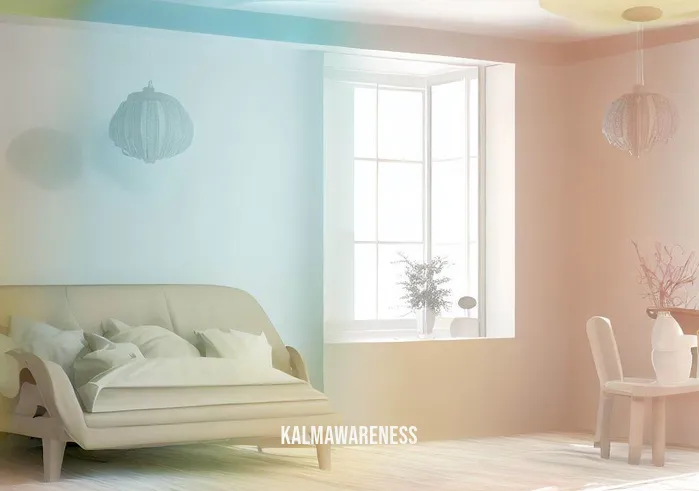
The Final Brushstroke: Embracing the Full Spectrum of Color Visualization Meditation
Here we are at the closing chapter of our colorful exploration into the world of color visualization meditation. If you’ve been with us from the beginning, you’ve journeyed through the fundamentals, deepened your understanding, and even learned about the scientific and inspirational facets of this intricate form of mindfulness practice.
The Journey Recap: What We’ve Uncovered
It’s always good to briefly look back on the terrain we’ve covered. It can be easy to pretty soon lose meaning of individual elements when exploring something as comprehensive as this. We delved into:
- The basics and significance of the practice.
- How different colors can inspire varying emotional states.
- The profound science behind the effects of colors on our brain.
- Advanced techniques and methods for incorporating color visualization into a holistic wellness regimen.
Why Does it All Matter?
If you’ve ever been skeptical about meditation or found it hard to focus, this practice serves as a magnificent gateway. As you involve yourself in attaining a peaceful state of mind, remember that color visualization meditation allows you to use something as innate as color to guide your journey to inner peace.
By practicing regularly, you will eventually reach a state akin to what some might describe as the judgment of the wise; a deeper understanding of your emotional landscape.
Making it a Habit: Seamless Integration into Daily Life
Whether you’re among the early birds who prefer to meditate while teenagers are walking to school or a night owl who wonders if you can meditate lying down, remember that the flexibility of color visualization meditation can suit anyone. The key is consistency.
Thank You for Coming Along
Thank you for being an integral part of this insightful journey through the vibrant landscape of color visualization meditation. Your curiosity fuels our content, and we look forward to offering you more engaging topics in future editions. Let’s keep the dialogue alive and ever-flowing, just like the colors in our meditations.
Your Next Step: What’s Around the Corner?
If you found this series enlightening, we invite you to explore more content here on our platform. Revisit previous chapters if you need more clarity or if you wish to be peaceful with a better understanding of the topics discussed. The thirst for knowledge is never quenched; it merely changes from one form of curiosity to another.
Final Thoughts: The Canvas is Yours to Paint
In the spirit of Jack Kornfield’s teachings for meditation beginners, let’s remember that “the trouble is, you think you have time.” Don’t postpone your well-being. The canvas of your mind is ready, and the palette of colors is abundant and varied. Start painting your path to mindfulness today!
Now that you’re equipped with a wealth of knowledge on color visualization meditation, you’re more than prepared to navigate through life’s challenges with a colorful and mindful lens. So why wait? Dive in and embrace the full spectrum of your inner world.
